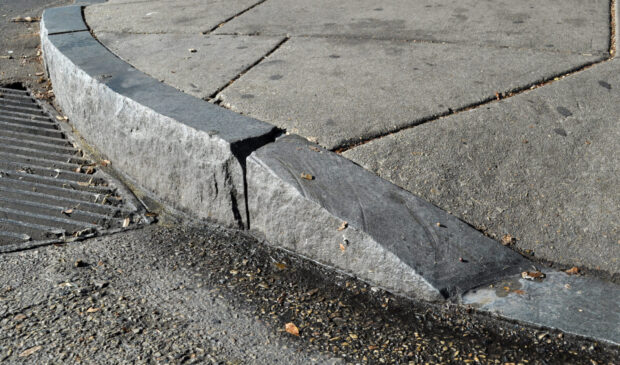Disability commission pushes city to pick up pace of sidewalk improvements
Wednesday, July 26, 2023 by
Chad Swiatecki Improved access to public transit and bike-share programs – possibly including free service for all residents – is among the policy moves the Transportation and Public Works Department intends to ask City Council to consider later this year.
During a presentation last week to the Mayor’s Committee for People with Disabilities, John Eastman, division manager with the department, shared some of the details specific to sidewalk improvements included in a planned update to the city’s Strategic Mobility Plan. Along with discussing plans for installing more than 1,500 miles of sidewalks and shared streetscapes over the next 20 to 30 years to improve accessibility, Eastman shared five policy points related to transportation that tested well with survey respondents.
Along with the free transit option, ideas with strong support included providing a guaranteed basic mobility program via debit card, improving the allocation of transit resources away from low-capacity vehicles, providing subsidies to purchase scooters or e-bikes, and improving lights on paths used by pedestrians and bicyclists.
Eastman said it will cost the city $500 million to fill in all of the gaps and improve the condition of sidewalks throughout the city by 2053, with the money from bond proposals in 2016 and 2020 set to run out by 2028.
The sidewalk plan, as well as plans for urban trails and bicycles, are part of the larger Walk Bike Roll plan that was originally planned for Council’s possible approval last month. It’s now scheduled for consideration in September.
Eastman said the needs of the disabled community are among the priorities for sidewalk improvements throughout the city that include roughly 2,000 gaps at crossings to allow for safe movement.
“We’re trying to connect to people who are reliant on those pedestrian networks that may not for physical or economic reasons have access to vehicles,” he said. “They need those pedestrian networks, and they need (Americans with Disabilities Act-compliant) pedestrian networks in order to access transit and the opportunities that we all kind of take for granted.”
Among the other points of concern for safety and sidewalk accessibility, Eastman noted that the majority of the city’s “high-injury network” areas were focused in the Eastern Crescent region that has traditionally lacked infrastructure and public works resources. According to the city’s data, those areas in the east and northeast portions of Austin were nearly twice as likely to have an increased count of pedestrian injuries compared to the city as a whole.
While Eastman was encouraged by the progress the city has made in repairing and expanding sidewalks in the 14 years since that use was separated from general road maintenance, committee Chair Jonathan Franks criticized the 20- to 30-year time frame to provide access to disabled residents in all areas of Austin.
“I can get to my bus stop, but if I want to walk to the convenience store, that’s not accessible for me as a person with a disability, and a 20- to 30-year plan, I’ll be perfectly honest, that’s not satisfactory to the disability community,” said Franks, who has a visual impairment. “That’s still a long time for people who use mobility aids, whether it’s a cane, guide dog, a wheelchair … for those who may not always have access to affordable public transit, that continuously places a barrier in their way, and 20 years is not an acceptable time to wait.”
In response, Eastman said that Public Works has 24 crews dedicated to installing and repairing sidewalks, and one of the biggest limits on adding sidewalk capacity is finding workers to join the existing teams.
He also said completing the sidewalks and other plans will require support from voters on future bond issues, with sidewalks alone requiring $20 million to $30 million per year.
Photo made available through a Creative Commons license.
The Austin Monitor’s work is made possible by donations from the community. Though our reporting covers donors from time to time, we are careful to keep business and editorial efforts separate while maintaining transparency. A complete list of donors is available here, and our code of ethics is explained here.
You're a community leader
And we’re honored you look to us for serious, in-depth news. You know a strong community needs local and dedicated watchdog reporting. We’re here for you and that won’t change. Now will you take the powerful next step and support our nonprofit news organization?








